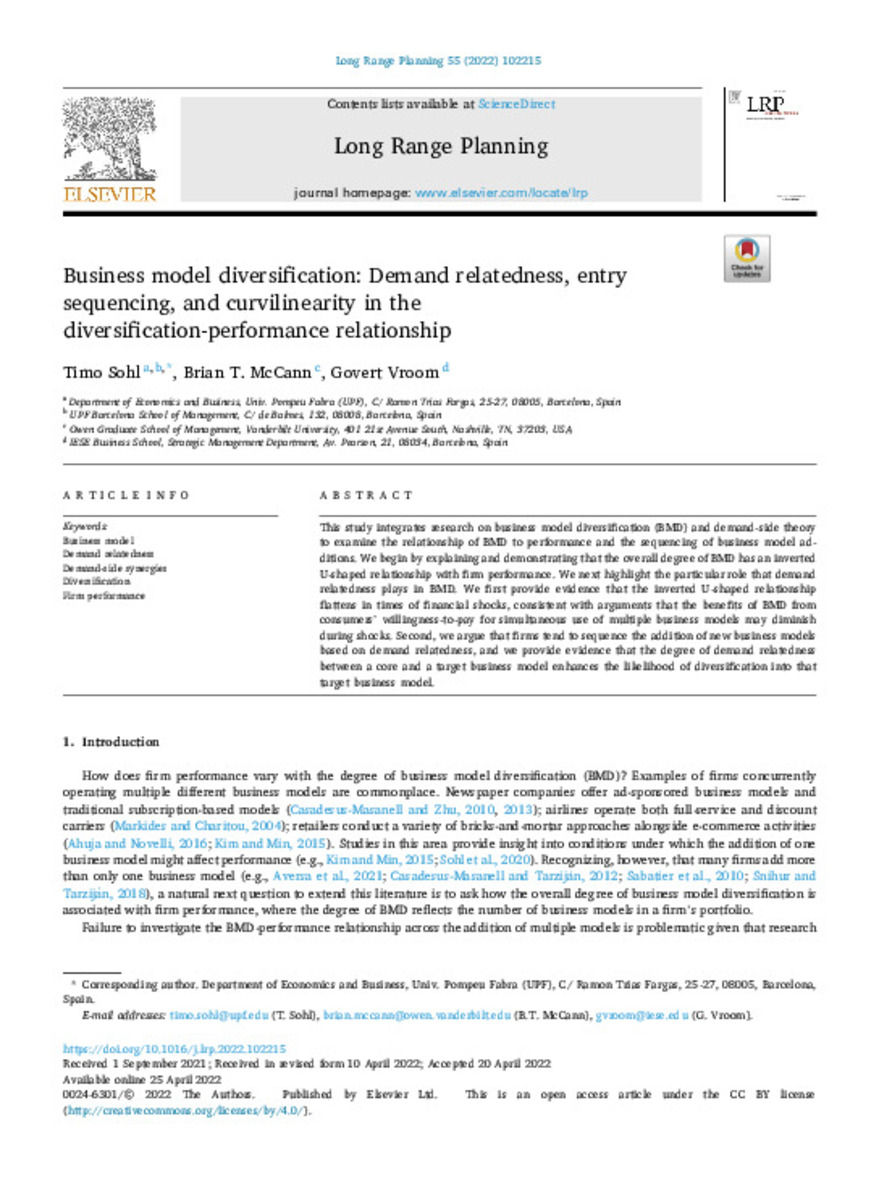Business model diversification. Demand relatedness, entry sequencing, and curvilinearity in the diversification-performance relationship
Palabras clave :
Business model
Demand relatedness
Demand-side synergies
Diversification
Firm performance
Fecha de publicación :
dic-2022
Cita:
Timo Sohl, Brian T. McCann, Govert Vroom, Business model diversification: Demand relatedness, entry sequencing, and curvilinearity in the diversification-performance relationship, Long Range Planning, Volume 55, Issue 6, 2022, 102215, ISSN 0024-6301, https://doi.org/10.1016/j.lrp.2022.102215.
Aparece en las colecciones:
Estadísticas e impacto
0 citas en

0 citas en

Los ítems de Dadun están protegidos por copyright, con todos los derechos reservados, a menos que se indique lo contrario.







